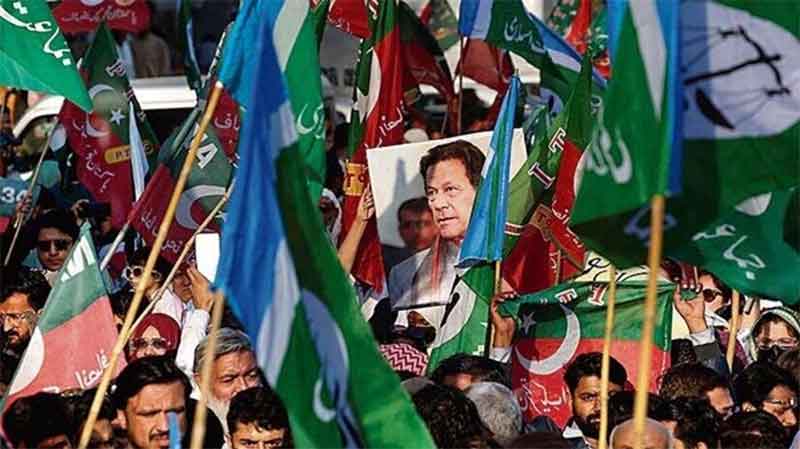
The landscape of political campaigning in India has evolved significantly over the years, particularly in terms of government spending on advertisements before elections. The controversial ‘India Shining’ campaign by the BJP-led government during the 2004 Lok Sabha elections marked a turning point, with an estimated ₹150 crore spent on the campaign, sparking debates over the use of public funds for such purposes. Since then, the BJP has consistently escalated election costs with each term for campaigns and other expenses. At this rate, the forthcoming elections in 2024 are poised to reach unprecedented heights. However, the critical question remains: should there be limits on pumping vast amounts of money into the festivals of democracy? This article aims to explore this question while we keep a check over the growing cost in election campaigns. Let’s do it in the following paragraphs:
The Elections 2024 Expenses
As per N Bhaskara Rao, the Chairman of the New Delhi-based Centre for Media Studies, predicts that election expenditure by political parties and candidates for five years starting in 2024 could reach 10 trillion rupees ($121bn), with 1.2 trillion rupees ($14.5bn) allocated for this year’s general elections. India’s escalating campaign expenditures have frequently been associated with illicit cash, at times sourced from the criminal underworld. However, in recent times, attention has shifted to corporate funding following revelations that Indian companies, including major players, channelled political donations worth hundreds of millions of dollars through an opaque system of “electoral bonds.” The majority of these proceeds were directed towards the ruling Bharatiya Janata Party (BJP). According to the Information and Broadcasting Ministry, the Central government spent ₹3,020 crore on advertisements between 2018-19 and 2022-23, with significantly higher spending in election years like 2018-19 (₹1,179 crore) compared to 2022-23 (₹408 crore). This trend is expected to escalate in 2023-24 ahead of the general elections.
Evolution of Campaigning Methods & Challenges in Regulating Expenditure
Historically, governments relied on public meetings to spread awareness about policies, but in recent decades, print and electronic media advertisements have become the norm due to their wide reach. However, these advertisements often promote ruling party campaigns and personalities, blurring the lines between government messaging and party propaganda. Despite Supreme Court guidelines on government advertisements, ruling parties often leverage pre-election advertising to gain an advantage, undermining the level playing field. Election expenditure limits for candidates are routinely breached, with the official limit being ₹95 lakh per Lok Sabha constituency in larger states and ₹75 lakh in smaller states.
Political Party Expenditure and Funding
Political parties in India face no limits on election spending. In the 2019 elections, the BJP declared ₹1,264 crore and the Congress ₹820 crore in official expenditures, but a report by the Centre for Media Studies estimates total spending by parties at around ₹50,000 crore, much of it from corporate donations. The opacity of political donations and illegal cash distribution to voters weaken India’s electoral process. Despite initiatives like the electoral bonds scheme, which has faced scrutiny, much of the funding remains unaccounted for. The recent exposure of the electoral bond clearly indicates how the scheme intended to regulate election expenditure has instead facilitated substantial donations from private entities and other sources, exacerbating concerns about transparency and accountability in political funding.
Towards Electoral Reforms
Now, the big question is- whether election expenditure can be regulated. The answer is yes. There are several proposed electoral reforms including banning government advertisements six months before elections, capping party expenditures, and ensuring financial assistance to candidates aligned with prescribed limits. Additional steps include appointing more judges for speedy resolution of election-related cases. On the other hand, the Election Commission of India (ECI) has set the expenditure limit at ₹95 lakh for each Lok Sabha candidate and ₹40 lakh for each Assembly candidate for the upcoming general elections. The expenditure will be calculated from the nomination of each candidate until the completion of the election process. This expenditure covers costs related to public meetings, rallies, advertisements, hoardings, pamphlets, flexis, campaign materials, and all other election-related activities. Implementing these reforms would require bipartisan political support but is crucial for creating a level playing field and ensuring free and fair elections. Without such measures, the cost of election spectacles will continue to escalate, impacting democratic processes and accountability.
The Final words
In conclusion, the escalation of election budgets in India has raised serious concerns about the influence of money in politics and the integrity of electoral processes. The absence of strict spending limits has led to exorbitant campaign expenditures, often fueled by undisclosed corporate donations and illicit cash distribution. To safeguard the democratic principles of fairness and transparency, it is imperative to advocate for spending caps in political campaigns. Implementing effective regulations on election spending can help curb undue influence, promote a level playing field for all candidates, and restore public trust in the electoral system. By establishing clear and enforceable limits on campaign expenditures, India can take significant strides towards strengthening its democracy and ensuring that elections remain a true reflection of the will of the people.
Mohd Ziyauallah Khan is a freelance content writer based in Nagpur. He is also an activist and social entrepreneur, co-founder of the group TruthScape, a team of digital activists fighting disinformation on social media.











































